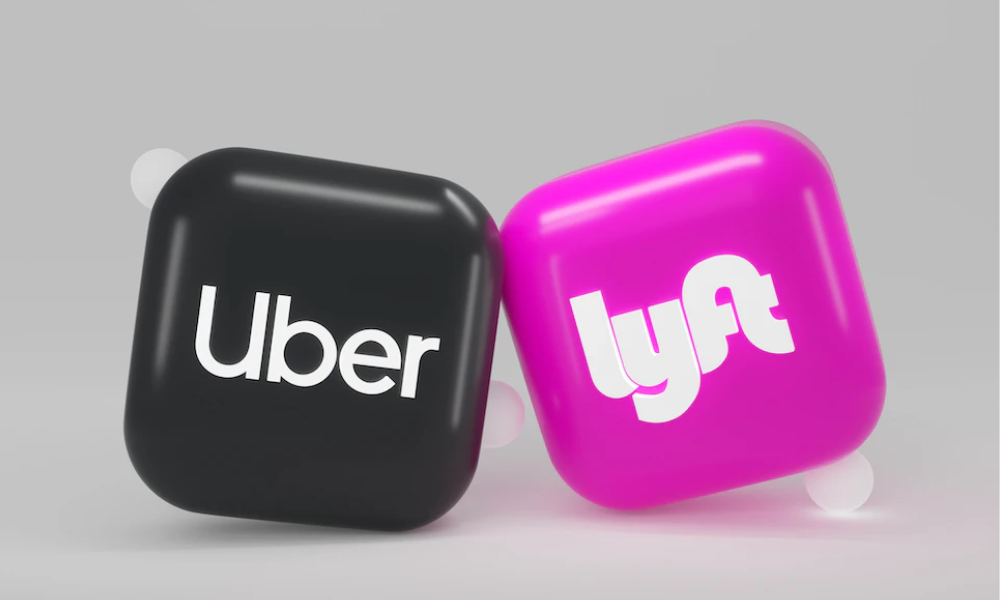In the ever-evolving world of ride-hailing, two giants have emerged as frontrunners in the United States: Uber and Lyft. As we enter 2024, these companies are engaged in a fierce battle for dominance, constantly innovating and diversifying their services to capture a larger customer base. In this article, we will explore the current state of the Uber vs Lyft competition, examining their strengths, innovations, and strategies.
Lyft: A Community-Oriented Ride-Hailing Experience
Lyft, founded in 2012, has swiftly established itself as a significant player in the ride-hailing market. Known for its friendly and community-oriented brand image, Lyft has consistently focused on enhancing the core experience of ride-sharing. The company’s recent ventures into food delivery and innovative features like pre-ordering cars for airport pickups demonstrate its commitment to carving out a unique niche in the industry. Despite challenges in reaching pre-pandemic sales figures, Lyft’s specific market segments, such as pet-friendly rides and wheelchair-accessible vehicles, indicate a strategic approach to cater to diverse customer needs.
Uber: More than Just a Ride-Hailing Service
Uber, founded in 2009, has become synonymous with the ride-hailing industry. However, the company has evolved into a multifunctional platform offering a wide range of services beyond traditional ride-sharing. With an impressive 76% market share in the U.S., Uber’s recovery and growth post-pandemic have been remarkable. Its expansive service offerings include meal and grocery delivery, parcel delivery, self-driving car services, and more. Uber’s clean and minimalistic app interface enhances the user experience, while strategic expansions into various segments, such as the “Uber One” membership for premium benefits, showcase its ambition to be more than just a ride-hailing app. Uber’s vision is to seamlessly integrate into the everyday lives of its users, solidifying its position as a leader in the industry.
Recent Innovations: Uber’s Quest for Customer Satisfaction
In 2024, Uber has unveiled an impressive array of innovative services aimed at attracting more customers and improving profitability. One notable advancement is the launch of Uber Travel, a service that allows users to reserve rides for each leg of their journey by connecting their Gmail accounts. This feature organizes hotel, flight, and restaurant reservations all in one place, providing a seamless travel experience. Additionally, Uber offers a 10% cashback incentive for each reserved ride, further enticing customers to utilize the platform.
Embracing the shift towards sustainable mobility, Uber has introduced “Uber Comfort Electric,” offering premium rides in electric vehicles like Tesla and Polestar in select cities. This move aligns with Uber’s goal to become a zero-emissions platform by 2040 and follows their partnership with Hertz to make Tesla vehicles available for drivers to rent. Uber is also dedicated to advancing electric vehicle adoption among drivers by developing an EV hub and charging map within the app, providing information and incentives to join the electric revolution.
Another groundbreaking initiative by Uber is the integration of Google Assistant into Uber Eats for voice ordering. This feature simplifies the ordering process, allowing users to place orders using their voice. Additionally, Uber is launching two autonomous delivery programs in Los Angeles, partnering with Serve Robotics and Motional, further showcasing their commitment to autonomous technology in delivery services.
Lyft’s Strides Towards Profitability and Sustainability
In 2024, Lyft is making significant strides in enhancing its services and profitability. The company aims to achieve an adjusted operating profit of $1 billion, building on its record earnings in the second quarter. Lyft’s success can be attributed to increasing demand for rides and effective cost-cutting measures. The company has also focused on improving rider-driver matching, refining mapping technology, and introducing new programs at various price points. However, challenges such as inflation and higher insurance costs remain cautious factors that could impact margins.
Lyft’s commitment to sustainability and environmental responsibility is evident in its expansion of the “Green” mode, which connects riders with electric vehicles (EVs) and other low-emission vehicles. Lyft plans to achieve 100% EVs on its platform by 2030. Initially available in Portland, the “Green” mode is now expanding to major markets like San Francisco, Los Angeles, and New York City. This expansion aligns with Lyft’s broader strategy to support drivers transitioning to EVs, promote sustainable travel forms for riders, and assist businesses in reducing their carbon footprint.
The Rise of New Players in the Ride-Hailing Market
While Uber and Lyft dominate the ride-hailing landscape, other innovative players are entering the market, bringing fresh perspectives and alternative options for both drivers and riders. Via, known for its community-oriented approach, focuses on carpools to create a more communal and eco-friendly travel option. Gett caters to a niche market of business clients, offering corporate fleets and luxury rides. Ztrip combines pre-scheduled and on-demand ride options, appealing to drivers who prefer a more predictable schedule, particularly for airport trips. Arro collaborates with existing taxi services, integrating technology to facilitate electronic payments for cab fares.
These emerging players, alongside others like Bolt, Gojek, Flywheel, Wingz, Hitch, and Grab, contribute to the diversification of the U.S. ride-hailing market. Each company brings a unique offering, ranging from luxury and business-focused services to long-distance travel options, broadening the choices available to consumers. For drivers, these companies present a range of opportunities that break away from the traditional norms of ride-sharing.
Conclusion: Uber’s Dominance and the Evolving Landscape
As we conclude our exploration of the Uber vs Lyft competition in 2024, it is clear that Uber stands out as the leader in the ride-hailing market. Its substantial market share, relentless pursuit of innovation, and diverse service offerings have solidified its position. However, the emergence of new players and their unique business models and service offerings add a dynamic edge to the industry. While Uber leads in market share and innovation, the evolving landscape of ride-sharing in the U.S. promises exciting developments and competition, ensuring that the sector remains vibrant and forward-moving.
In this battle for dominance, both Uber and Lyft continue to push boundaries, innovate, and adapt to the changing needs of customers. As consumers, we can look forward to a future of enhanced ride-hailing experiences, sustainable mobility options, and increased competition that benefits us all.


